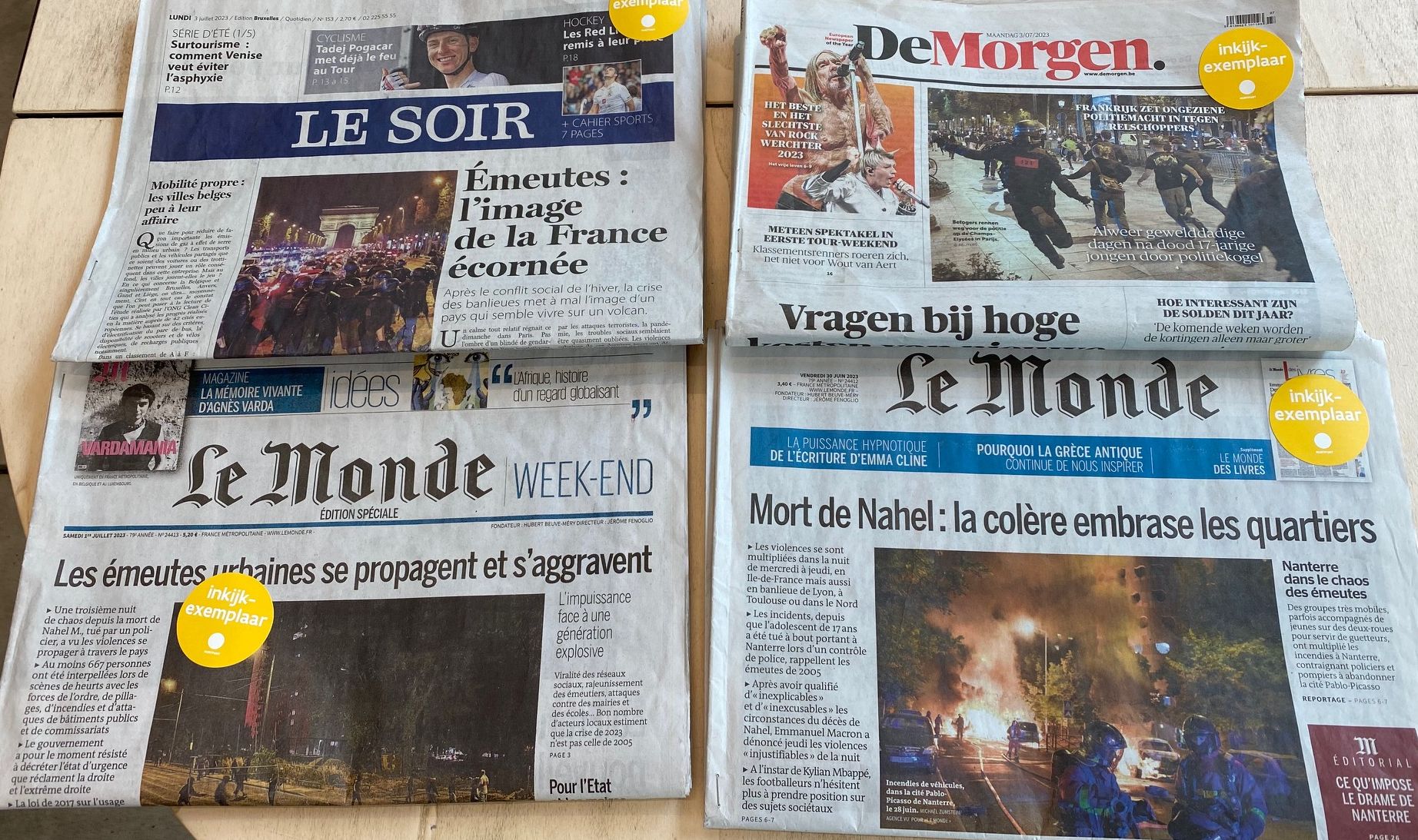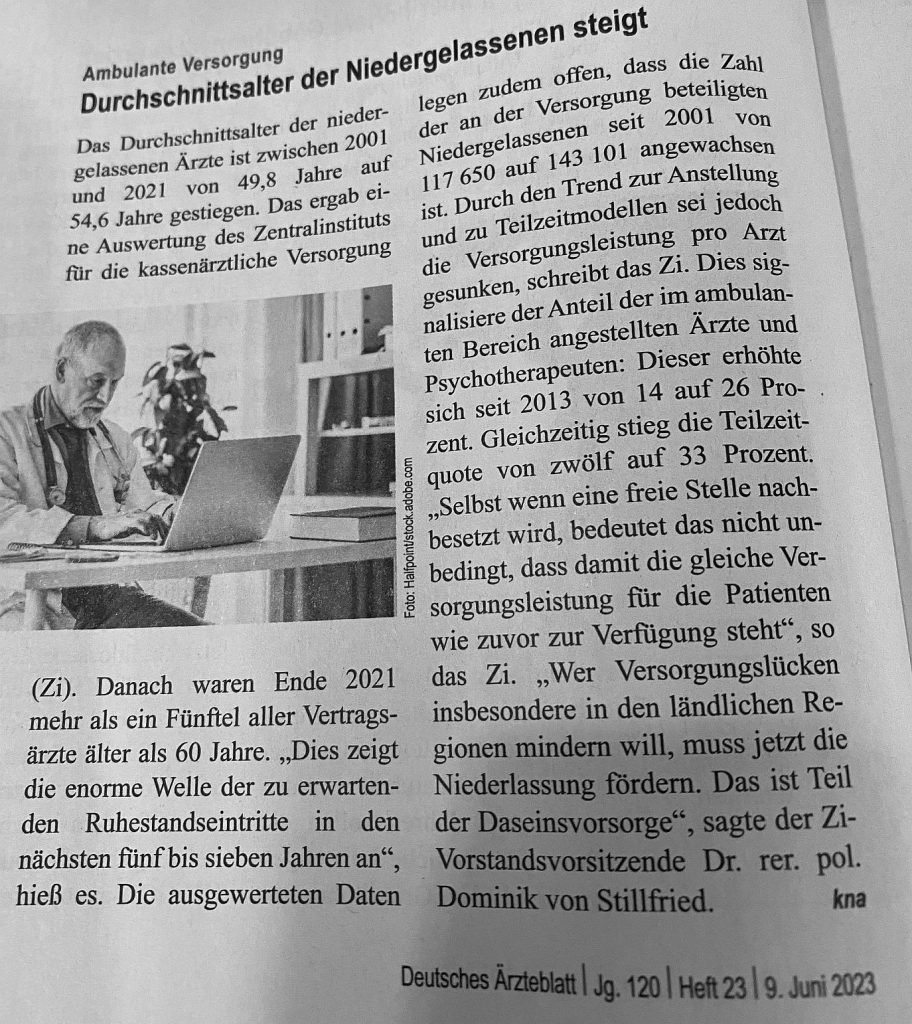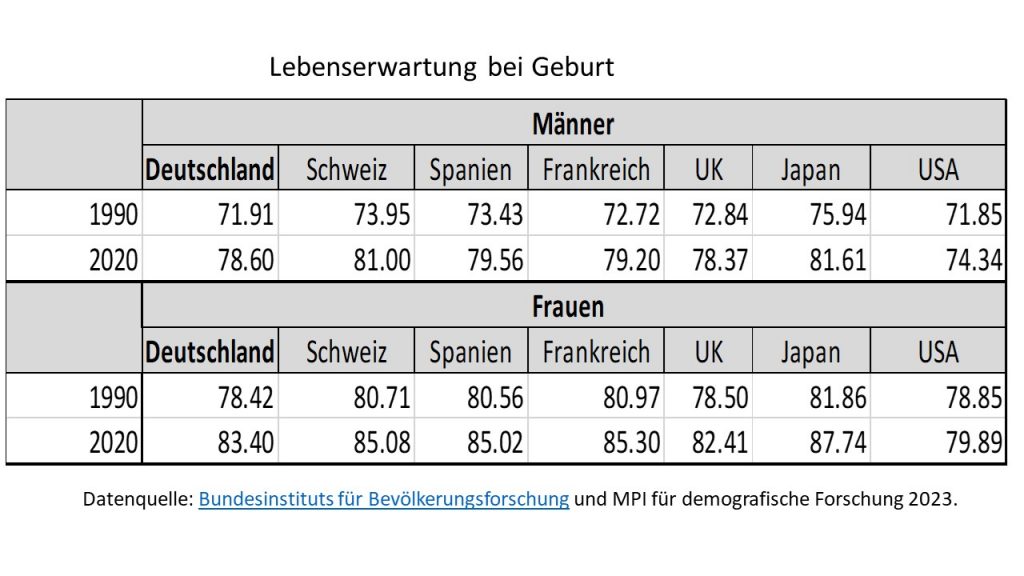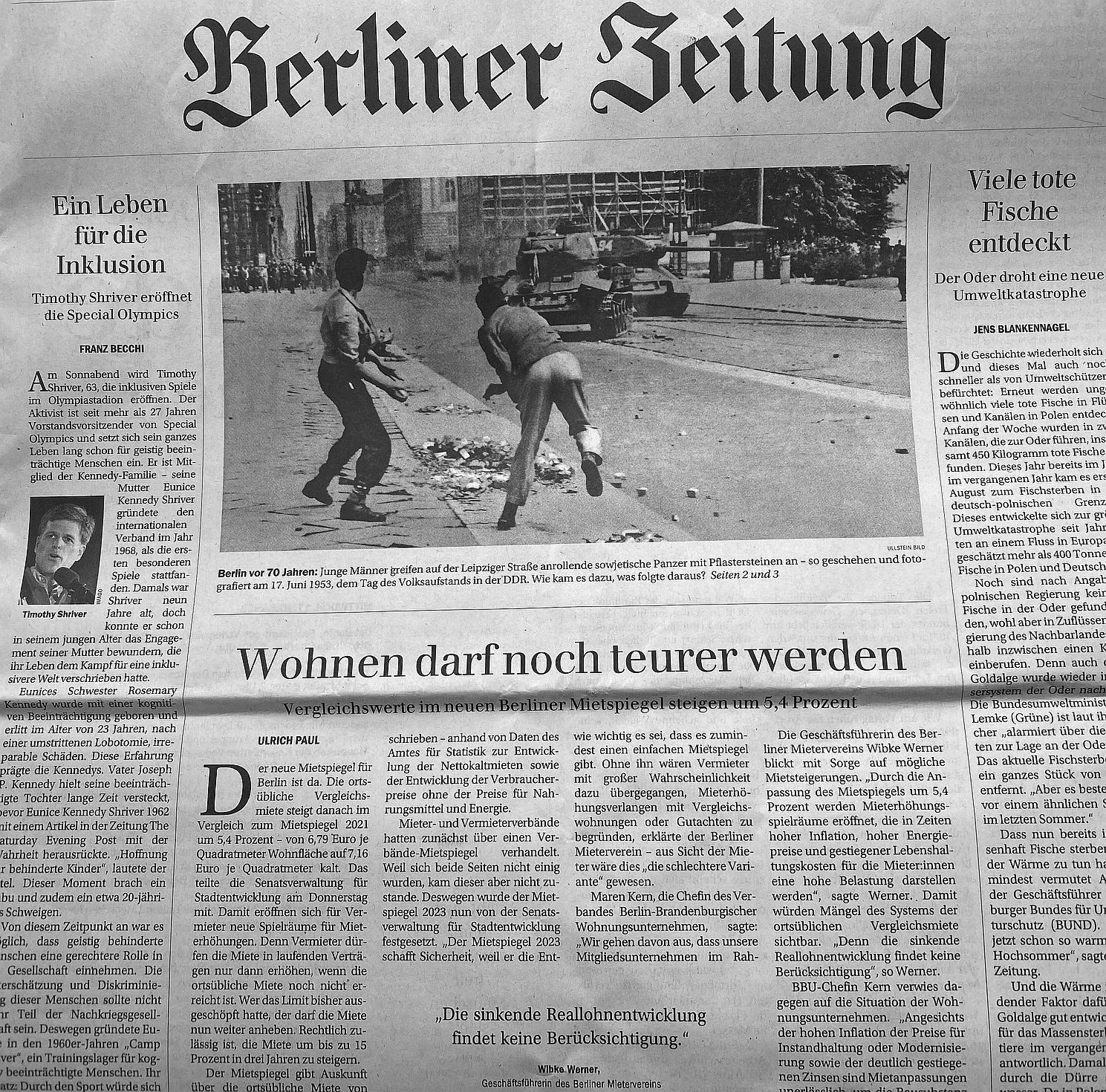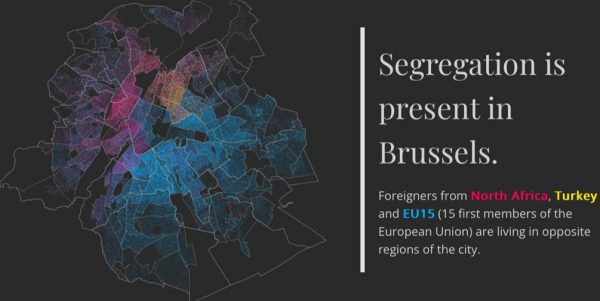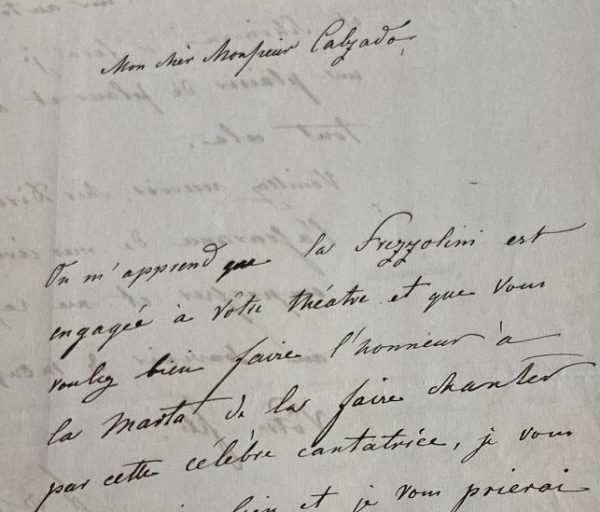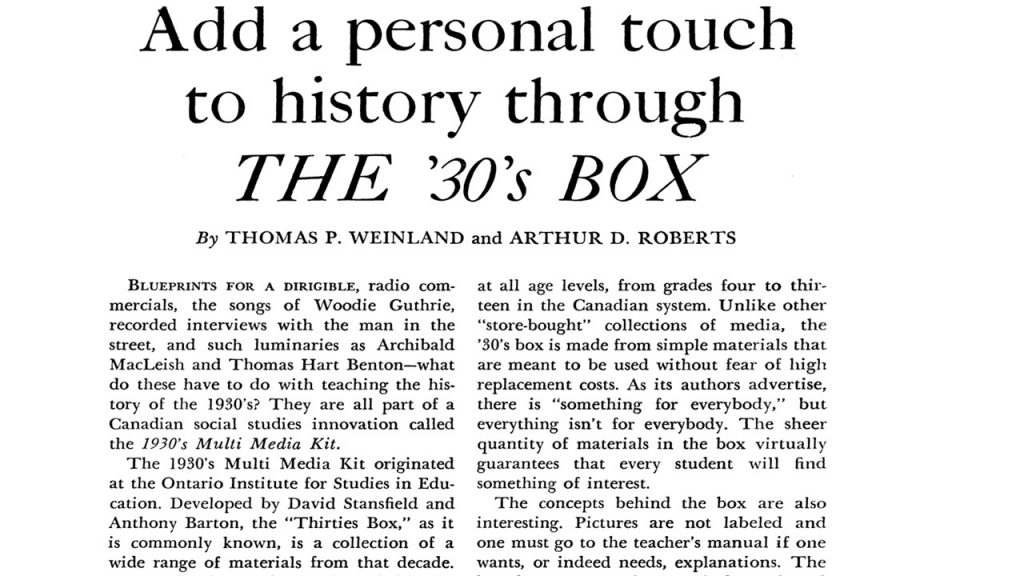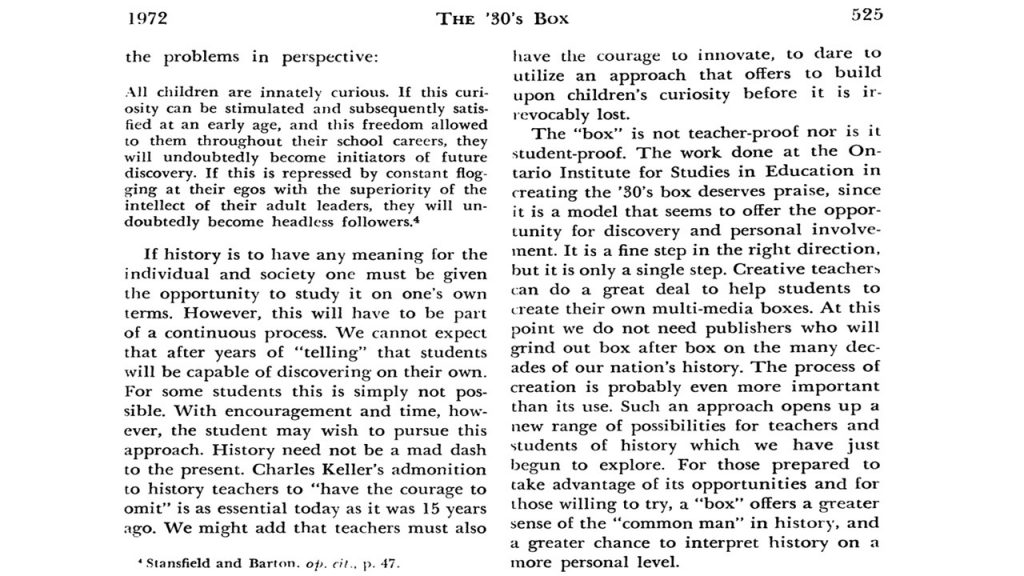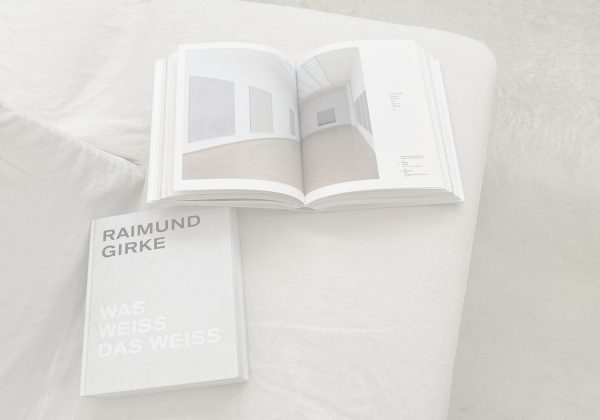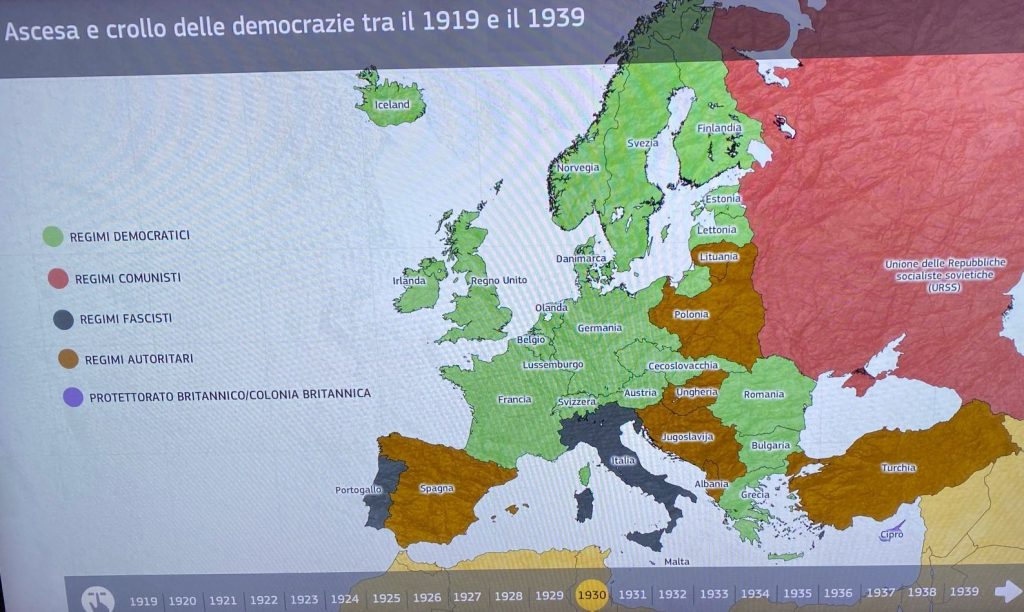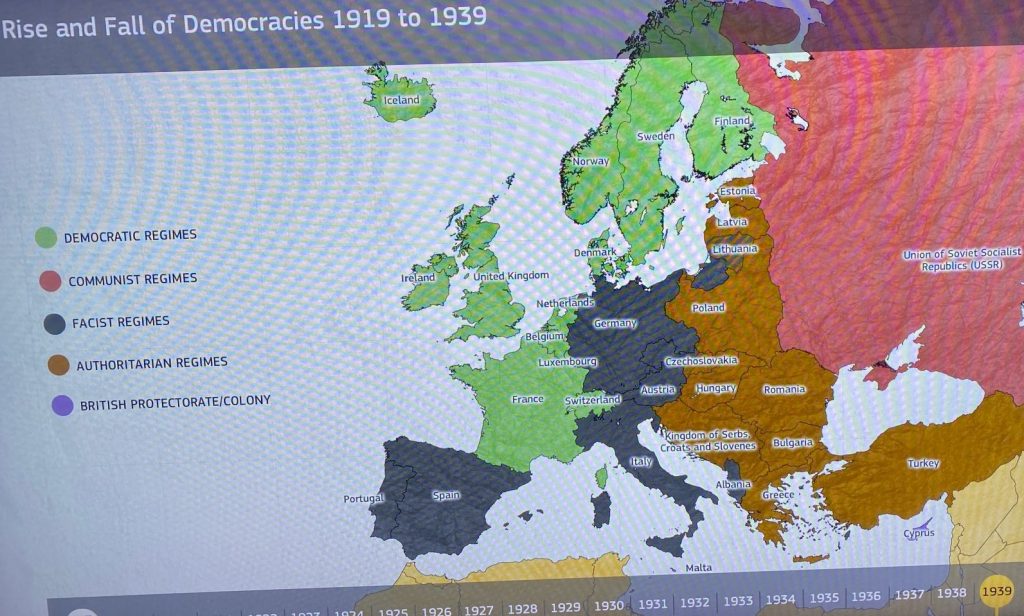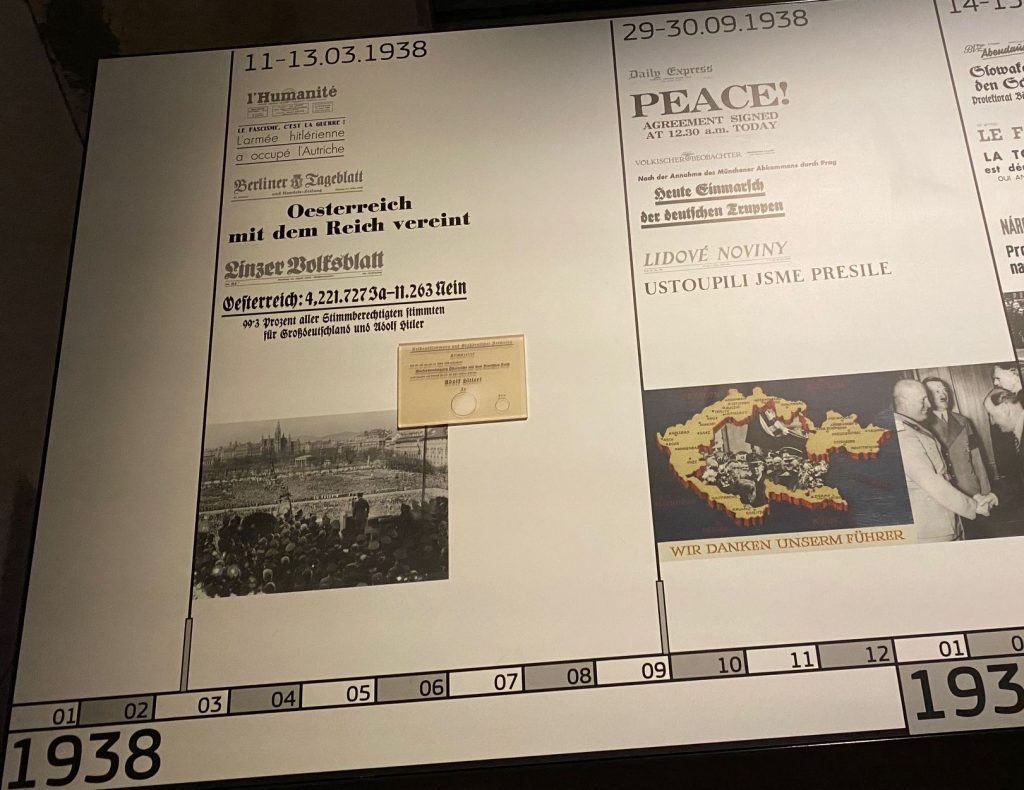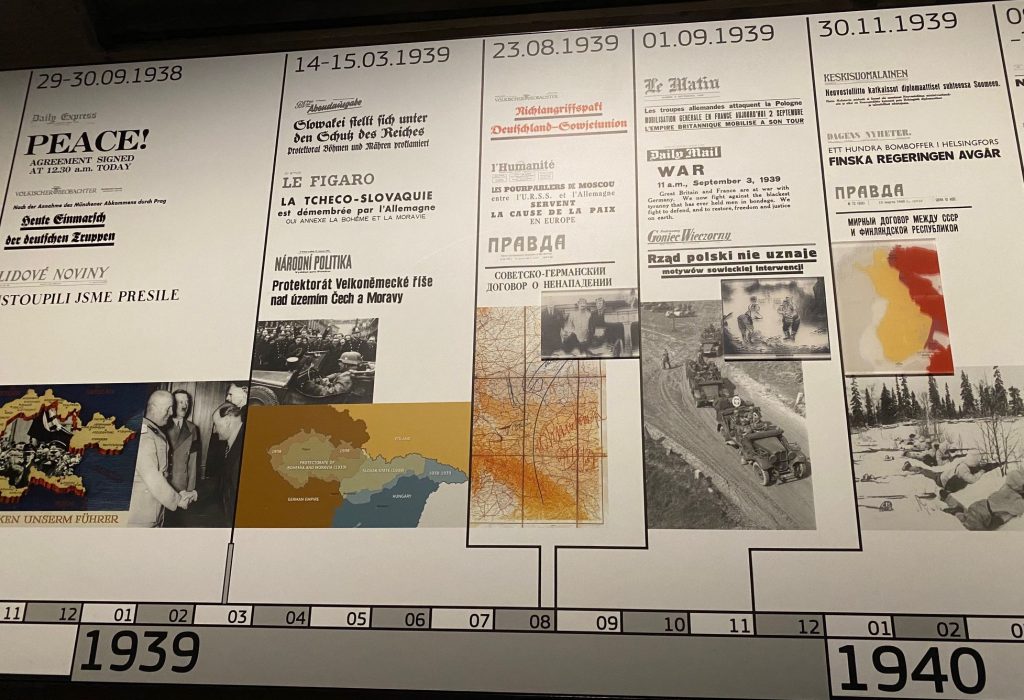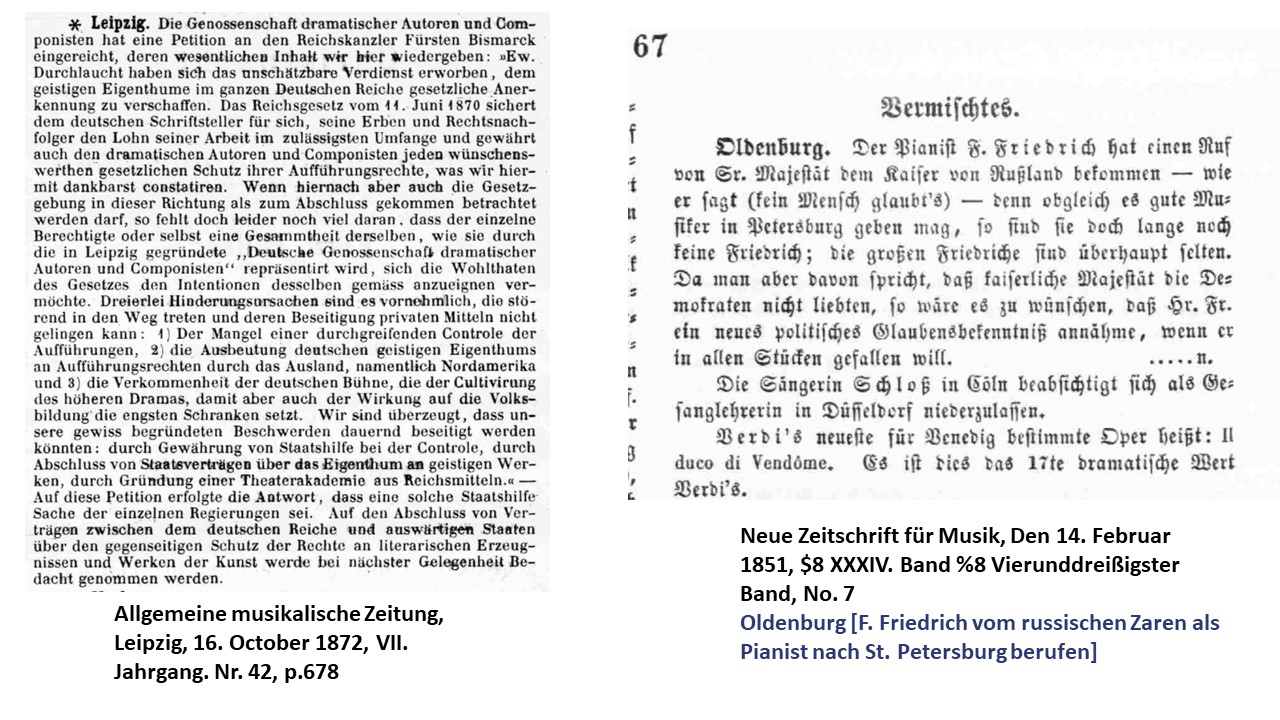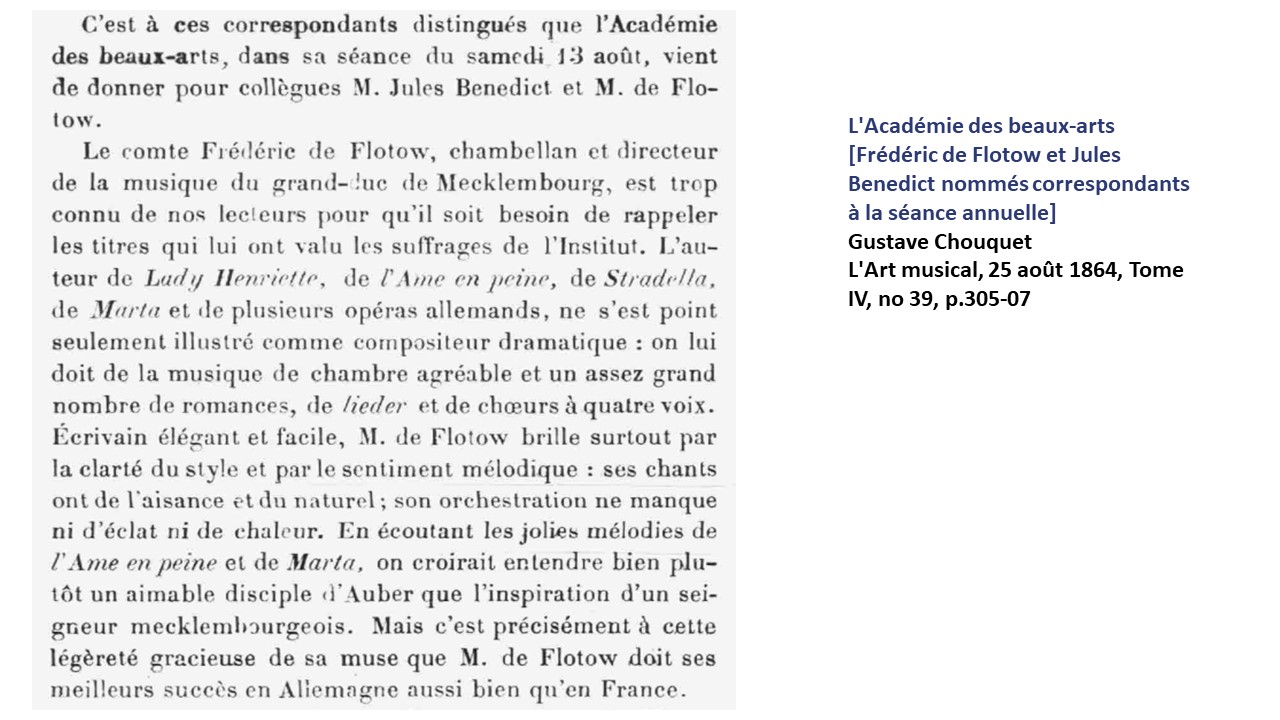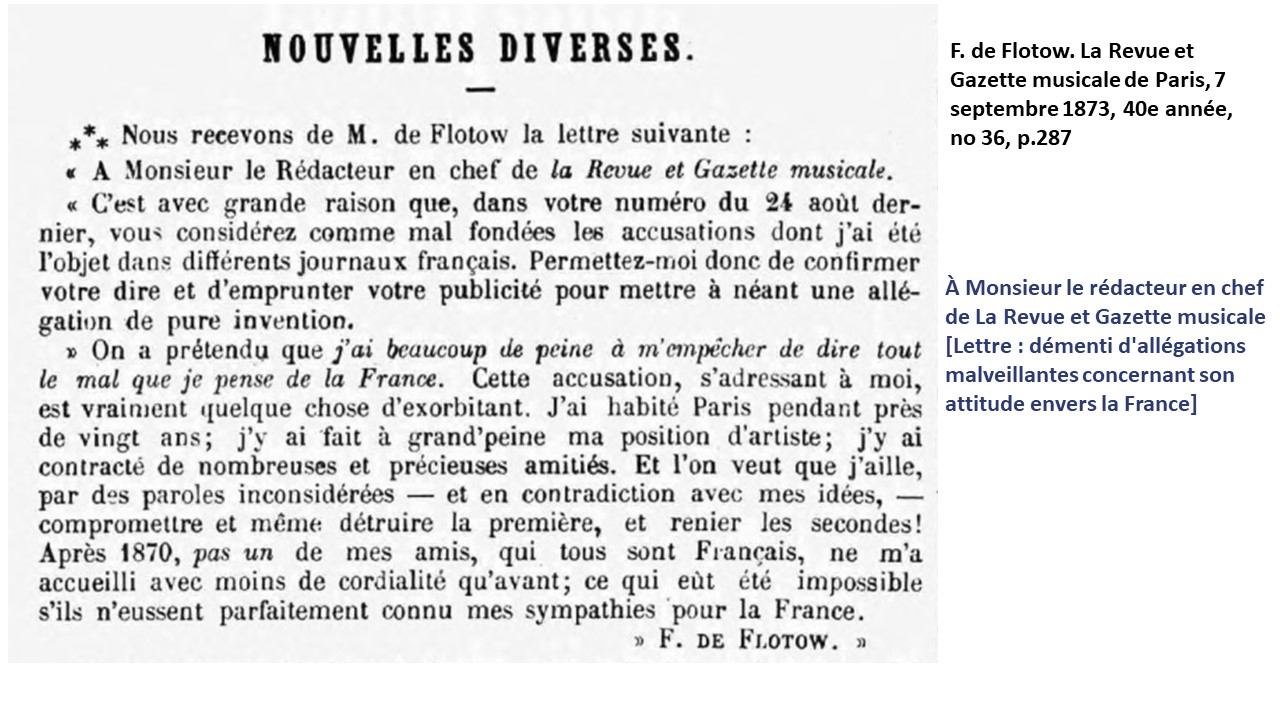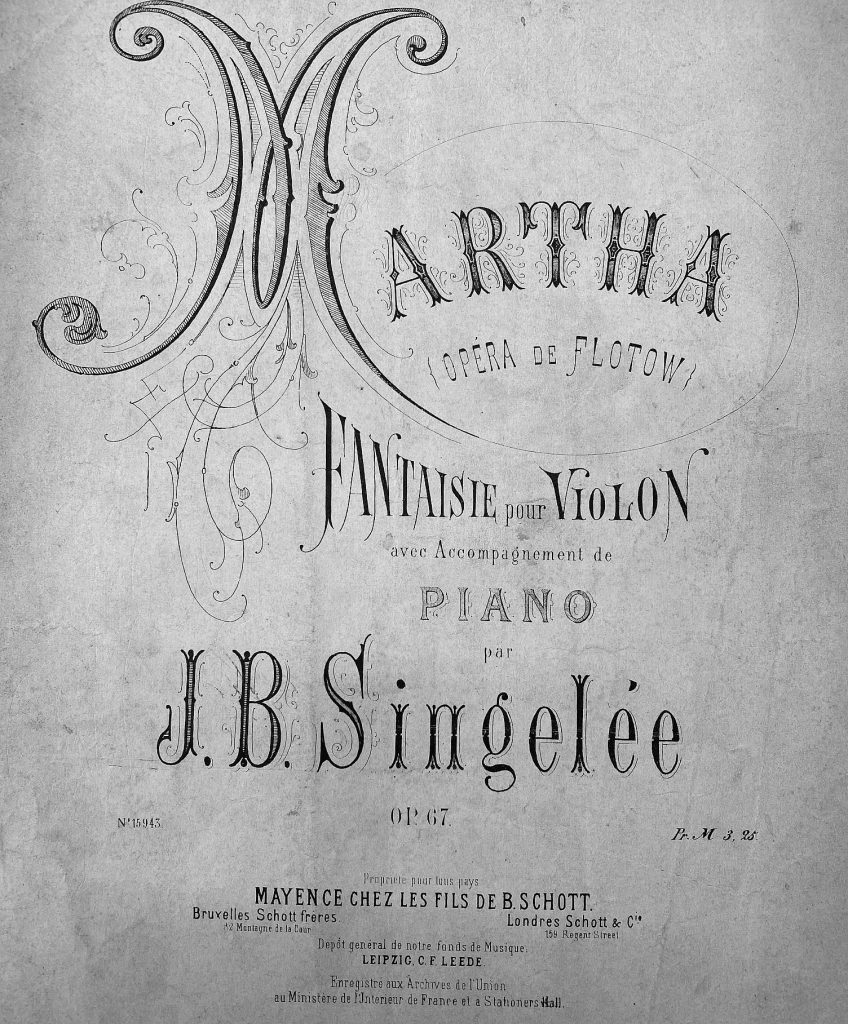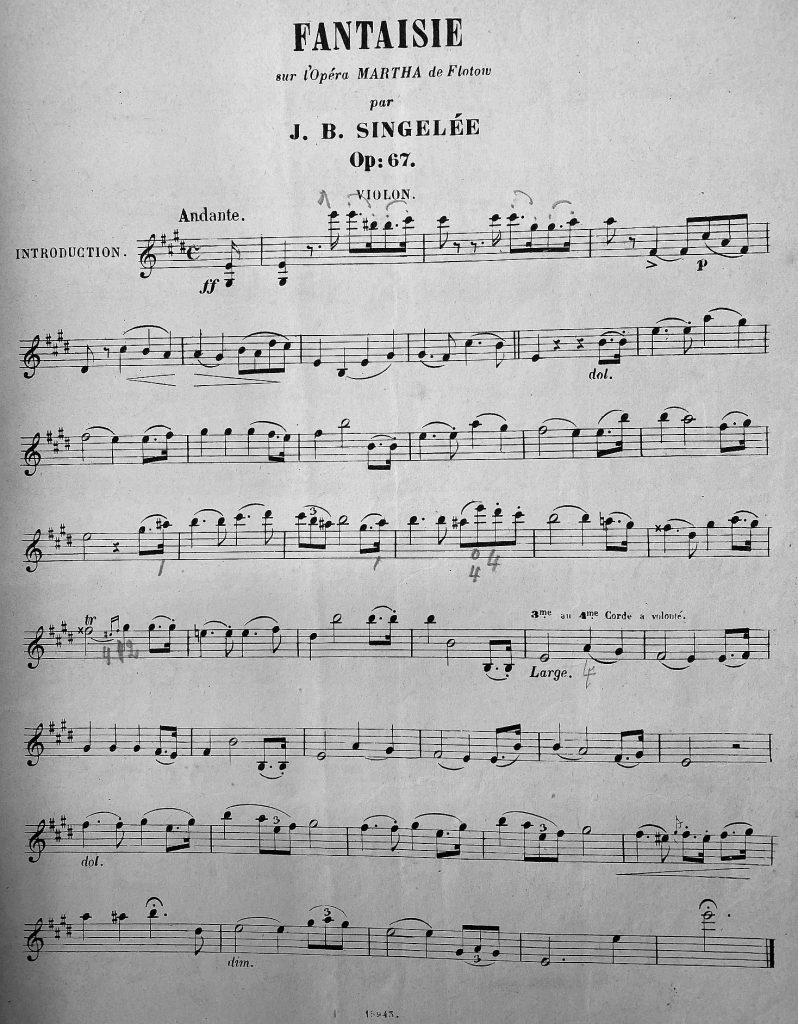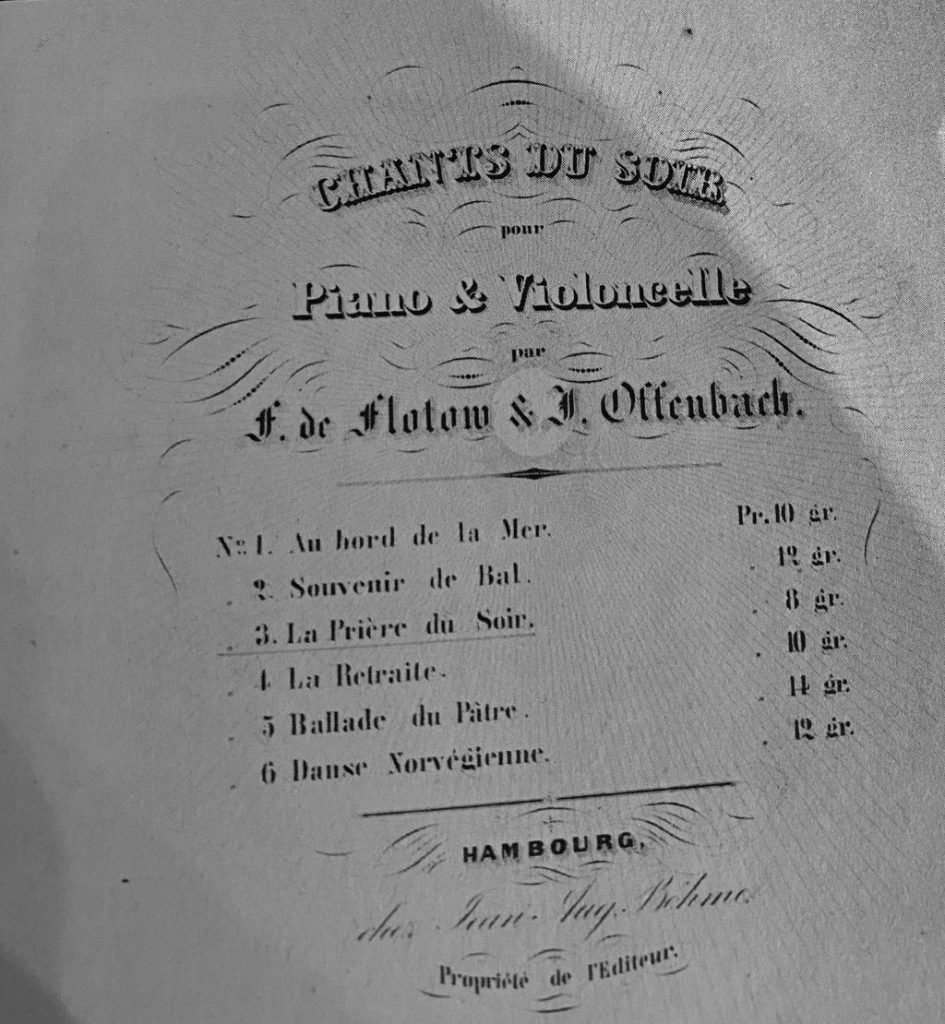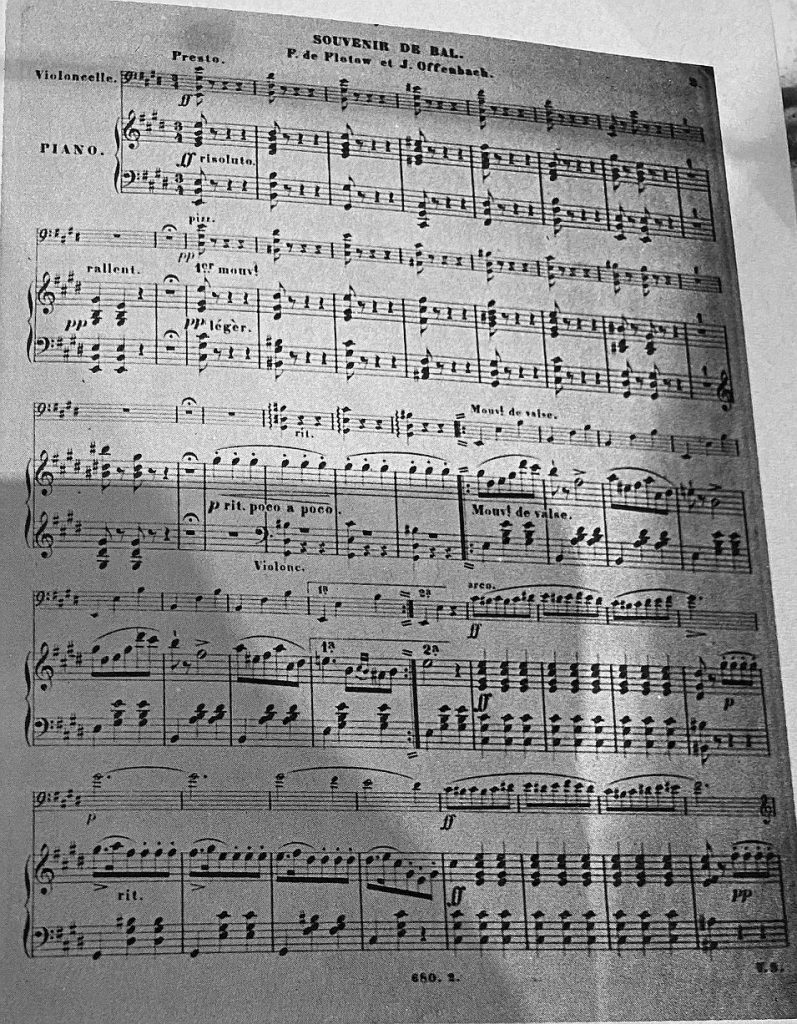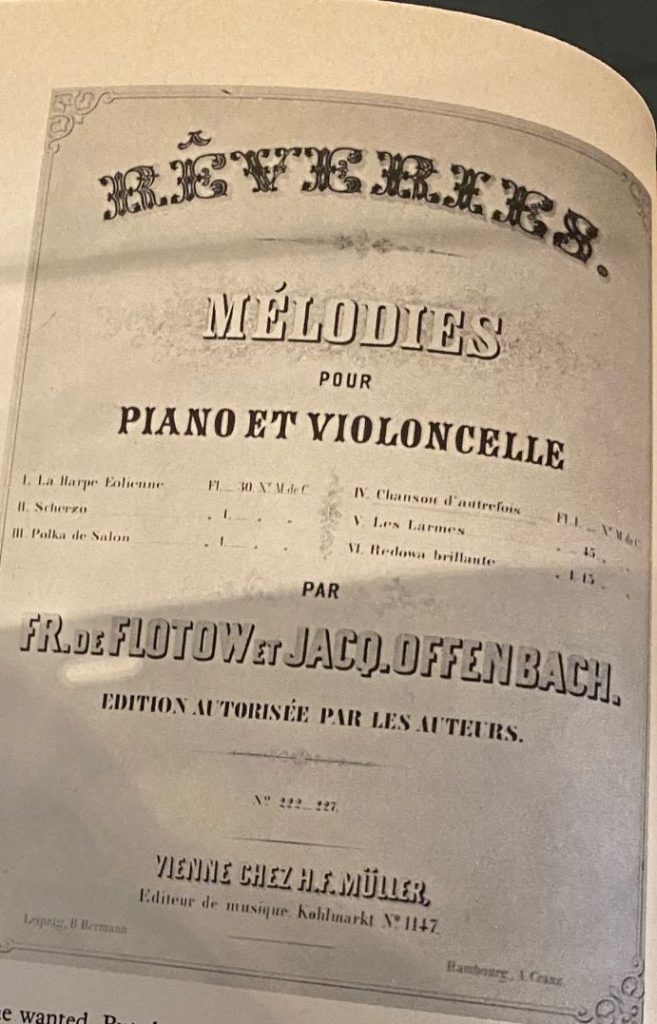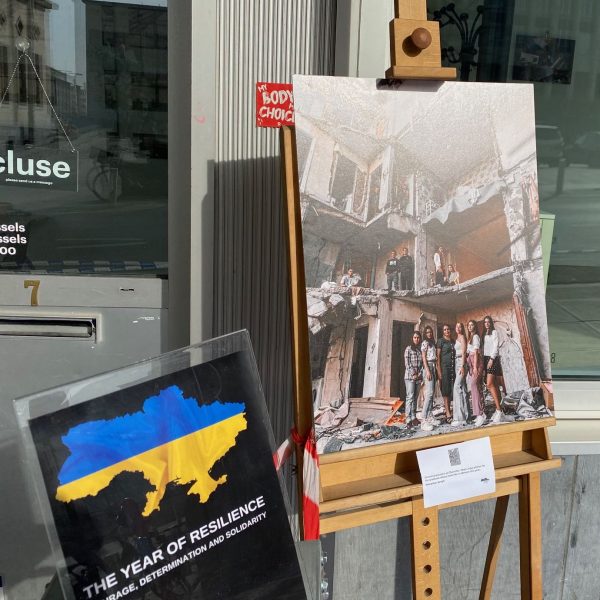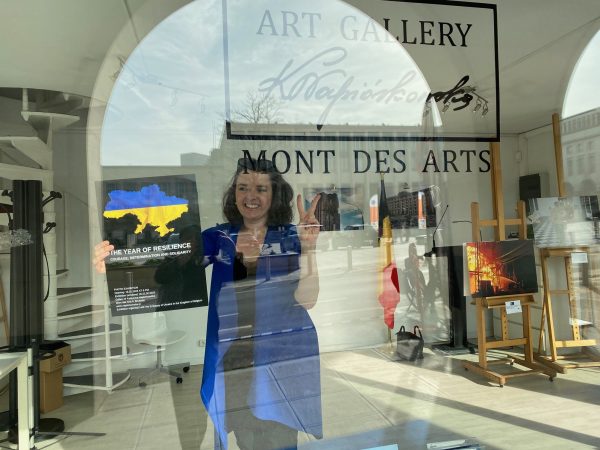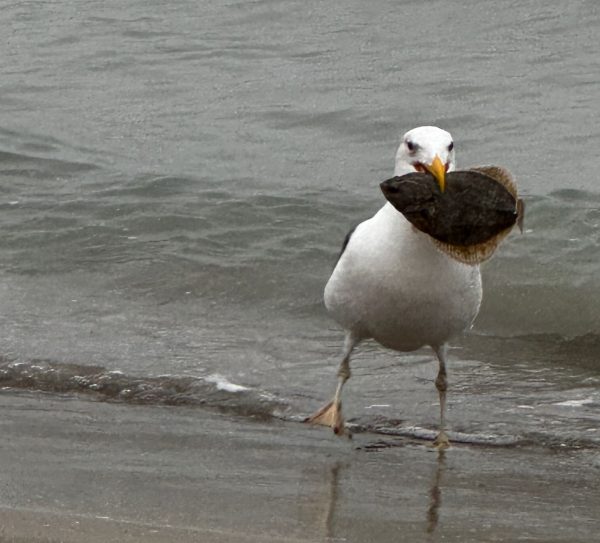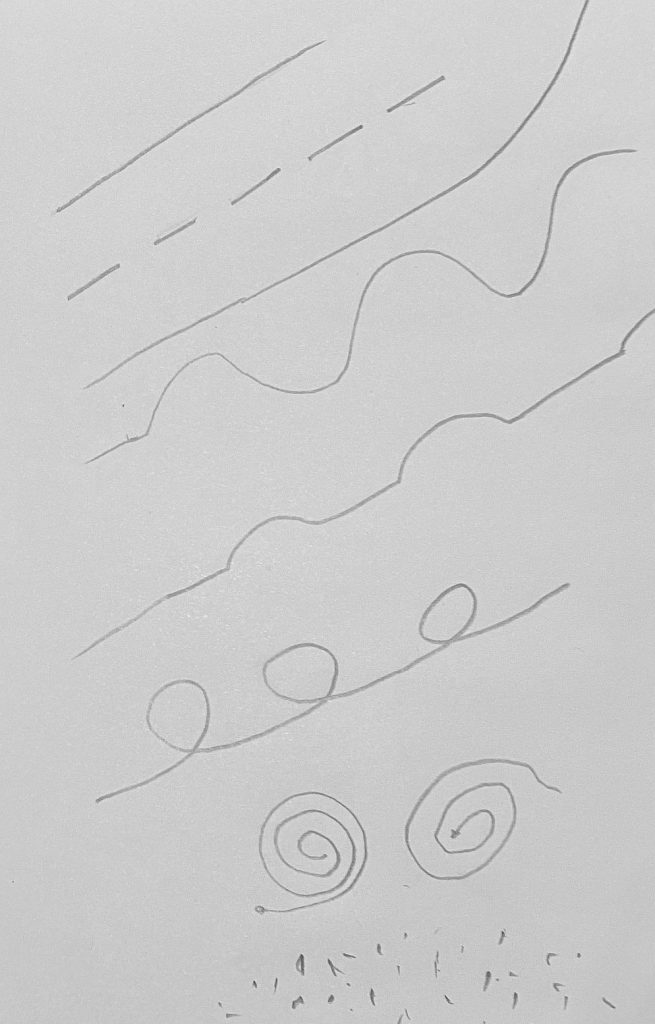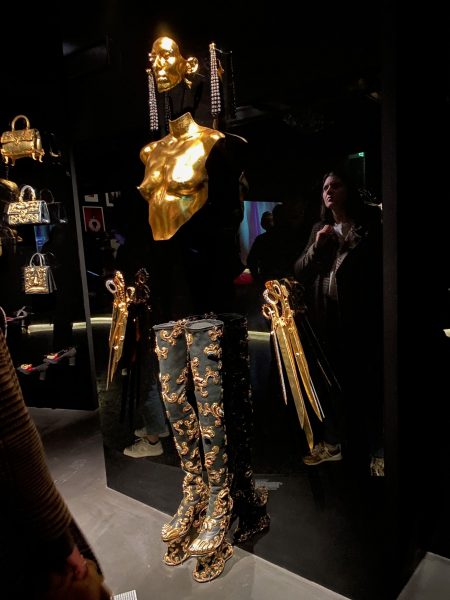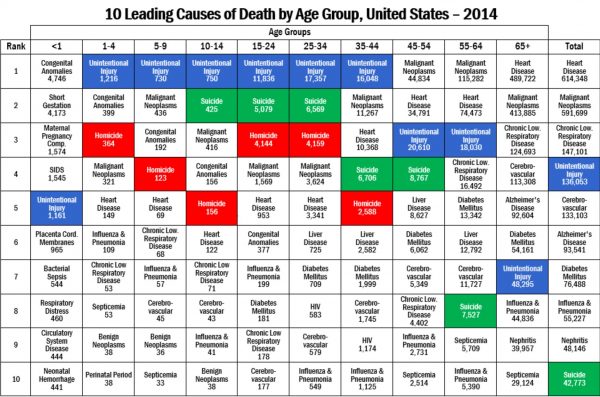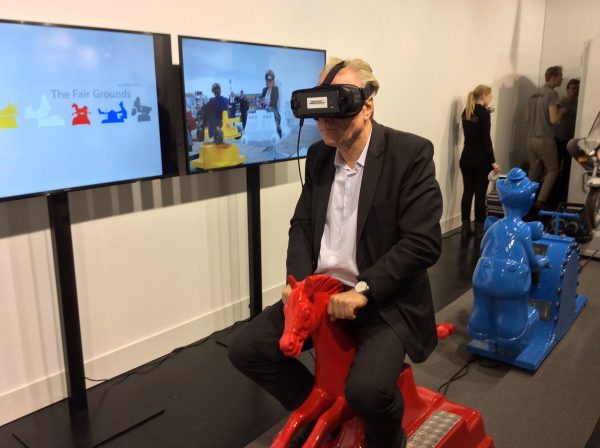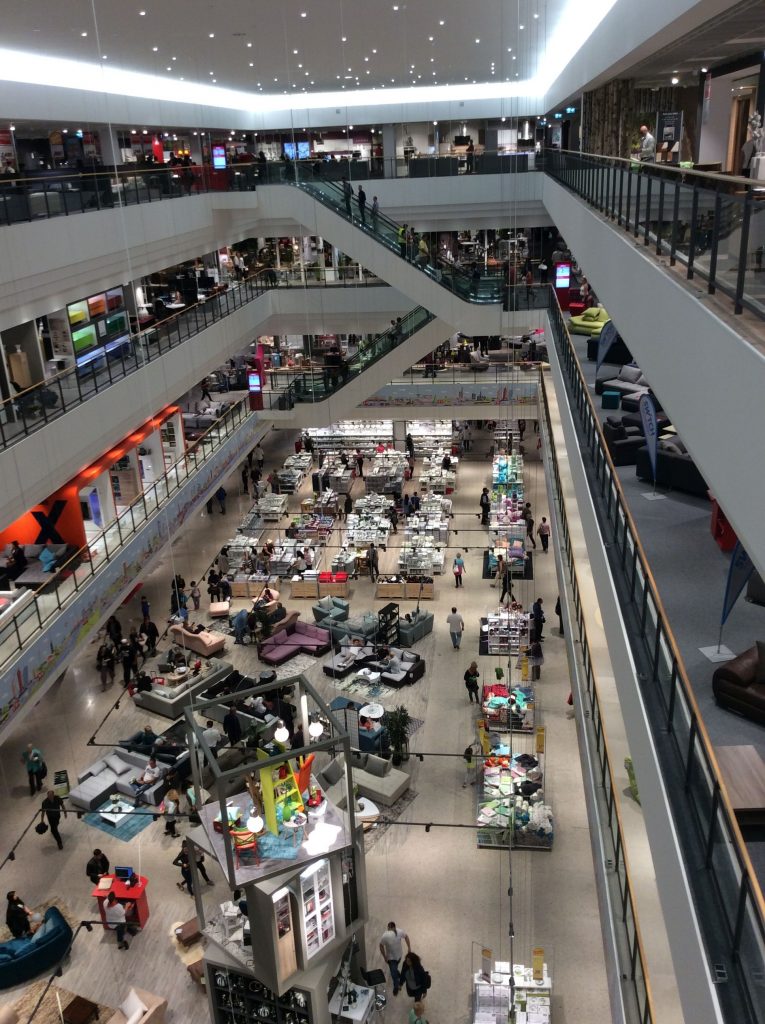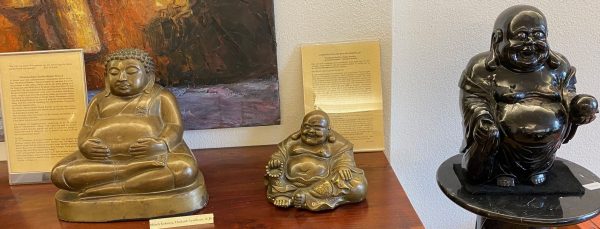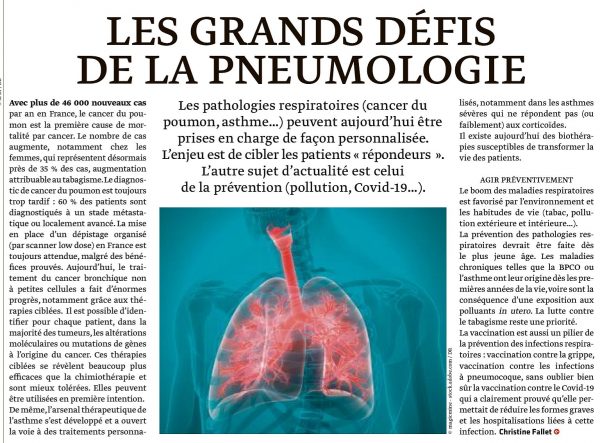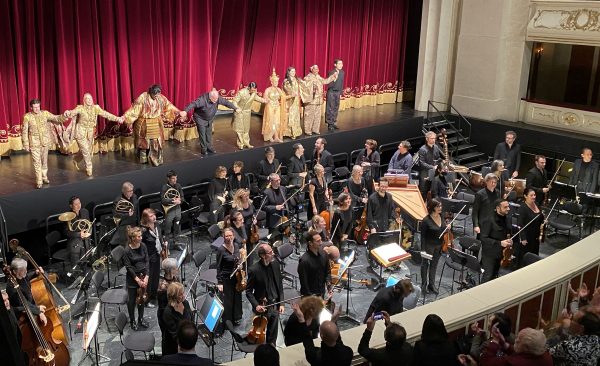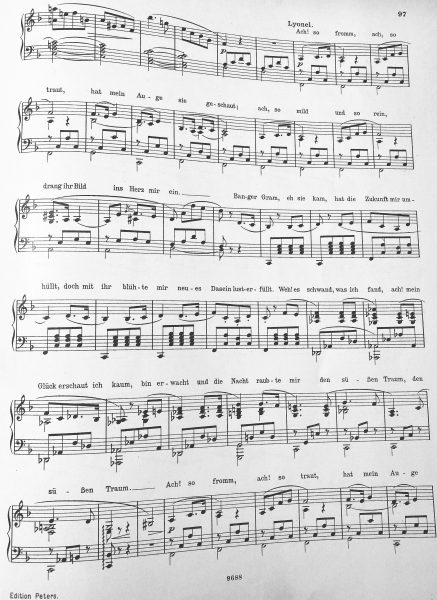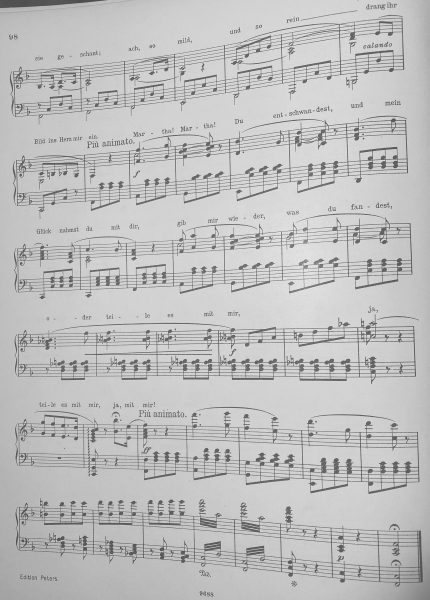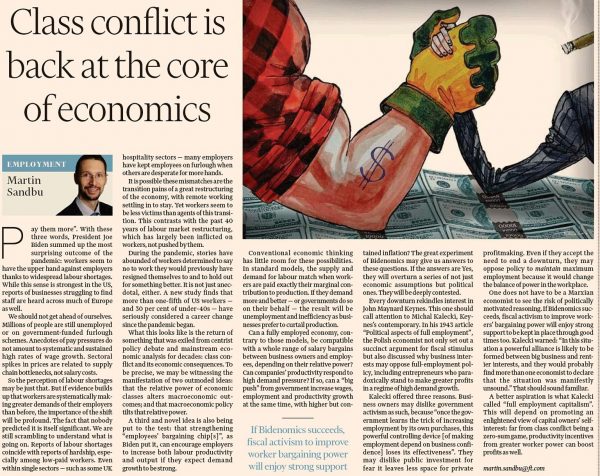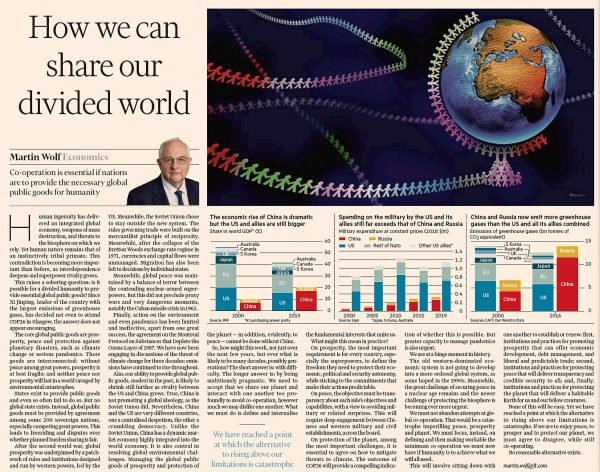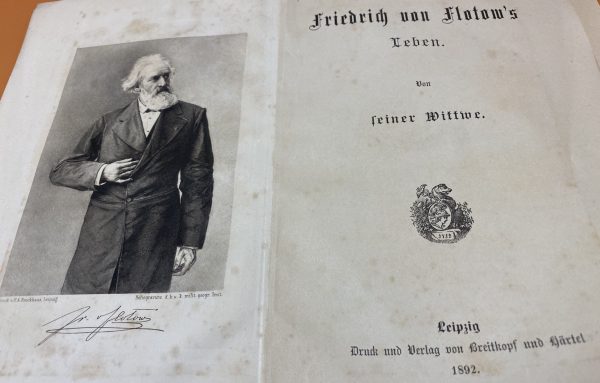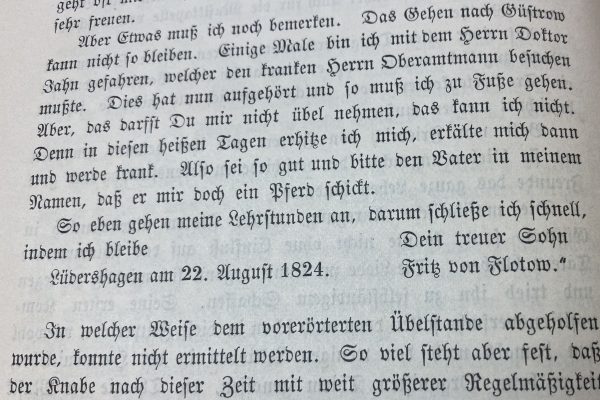In der Musikabteilung der Stabi Ost fand ich im Lesesaal der Musikabteilung einen schmalen Band zu einer Biografie von Friedrich von Flotow, dem Komponisten, verfasst von seiner Witwe aus 3. Ehe Rosa Rosine Swoboda, erschienen 1892 in Leipzig im Verlag Breitkopf und Härtel. Der Vater des Komponisten Johann Adolf Wilhelm *17.9.1785 wurde bereits als Offizier im Alter von 21 Jahren in der Schlacht bei Jena verwundet. Friedrich von Flotow wurde in bescheidenen Verhältnissen am 26.4.1812 in Teutendorf geboren. Sein Vater und Verwandte, (S.17) haben ihm, laut seiner Witwe, viele Steine in den Weg gelegt, damit Fritz keine musikalische Laufbahn einschlägt (S.27-28). In unterschiedlichen Pensionen zuletzt in Lüdershagen bei Güstrow lernte Fritz Harmonielehre und weilte tageweise bei der Schwester seiner Mutter. Auch mütterlicherseits wird ein dänischer Hauptmann von Böckmann auf Lüsewitz (S.21) erwähnt, dessen älteste Tochter Jeanette mit einem Herrn von Bülow verheiratet war, der aber bald verstarb. Nach Rückkehr ins Vaterhaus lernte Jeanette den jungen Studenten Gabillon kennen, Sohn eines französischen Tanzlehrers in Mecklenburg. „Hochgebildet, geistreich und mit vielen körperlichen Vorzügen ausgestattet, hatte er bald das Herz der jungen Witwe erobert, die in ihrer ersten Ehe kein besonderes Glück gefunden hatte.“ (S22). Im Chor des Güstrower Gesangvereins unter Leitung des Steuersekretärs Gabillon durfte Fritz bereits 13-14-jährig mitsingen und vielfältige Instrumente kennenlernen.
Dem Wunsch des Sohnes und seines Fürsprechers nachgebend, reiste der Vater am 13.2.1828 mit Fritz nach Paris, wo Fritz bei einem französischen Major, der mit einer Frau aus Mecklenburg, die bereits verstorben war, verheiratet gewesen war, in Pension wohnte. Harmonielehre bei Anton Reicha (besser erläutert hier engl. Reicha), bei dem bereits 1820 Hector Berlioz Schüler war, hatte Fritz nachhaltig beeinflusst. Tief beeindruckt war er von dem Glanz und Glamour der Pariser Oper mit dem Ballett „La belle au bois dormante“ und Rossini’s Oper Wilhelm Tell.
Am 26.3.1830, 2 Tage nachdem Fritz die Selbsttötung seines Wohnungsgebers erlebt hatte, wurde dieser auf dem Friedhof Père Lachaise beigesetzt. Fritz überzeugte seine Eltern mit Hilfe von Gabillon, dass er selbständig mit gerade 18 Jahren eine Mansardenstube in der Rue St. Jacques beziehen durfte und seinen Unterricht fortsetzten konnte. Die am 27.7.1830 ausgebrochene Revolution schilderte Fritz anschaulich in seinen Aufzeichnungen. „Einige Tage nach dem Schlusstableau der Julirevolution“ (S.44) erhielt Fritz ein Schreiben von seinem Vater, zurück nach Güstrow zu kommen.
Wichtig zu erwähnen als Wegbegleiter sind Eugène Aubry (Bürgermeister von Argenteuil, die Stadt der Impressionisten) und Freund von Fritz der bereits 1871 verstarb, (Rue Rocher Nr. 9 Hotel Aubry (S.62) sowie Jaques Offenbach, der 7 Jahre jünger als Fritz ursprünglich in Köln geboren Jakob Eberscht hieß (Quelle Richard Fleischer, Deutsche Revue Heft 1 Januar 1883). Die Witwe von Fritz beschreibt die Einführung von Jacques Offenbach auch mit Unterstützung von Fritz zu Beginn in die Pariser Salons recht ausführlich (S. 67-72). Letztmalig treffen die beiden sich 1878 in Paris bevor Jacques am 5.10.1880 starb. Geradezu erheiternd ist die Passage (S. 84-86) bei der Fritz, sichtlich beeindruckt, von dem Erscheinen von Madame Georges Sand berichtet, die sich in der Pause eine Männerzigarre anzünden ließ. Anschließend gab es eine Improvisation von Chopin, die derselbe einleitete „er könne seine Begeisterung nur aus den Augen der berühmten Schriftstellerin schöpfen, man möge sie bitten, sich ihm gegenüber zu setzen. Georges Sand gewährte seine Bitte und nahm Platz am Ende des Flügels, warf einen langen Blick auf den musikalischen Improvisator und dieser, denselben erwidernd, begann“ (S.85). Nach vielen misslungenen Versuchen eine Oper in der großen Oper in Paris aufzuführen, ist es ihm zumindest 1843 geglückt, das Ballett „Lady Harriette ou la servante de Greenwich“ aufführen zu können. Aus diesem Stück wurde später das Libretto zu seiner Oper Martha 1947 in Wien erstellt und aufgeführt. Die prima ballerina dieser Aufführung, Adèle Dumilâtre, hatte indirekten Anteil daran, dass es überhaupt zu diesem recht kurzfristigen Engagement kam. In den folgenden Jahren bestimmten die Aufführungen der “Martha” den Erfolg des Komponisten. Ausgehend von der Auftragsarbeit für Wien kam dieses Werk aber auch 1858 nach Paris auf die Bühne im „italienischen Theater“. Nach Übernahme des elterlichen Gutsbesitzes hat Fritz 1849 geheiratet, doch bei der Geburt des Sohnes verstarb die junge Elise von Zadow am 1.8.1851. Eine 2. Heirat mit Anna Theen wurde anfangs 1855 beschlossen. Zwei Söhne sind aus dieser Ehe erwachsen. Als Leiter des Hoftheaters in Schwerin hatte er sich durch seine Kenntnis von Proben und Organisation der führenden Häuser in Europa empfohlen. Als Intendant neben einem technischen Leiter wurde ihm zunächst befristet auf ein Jahr mit Aussicht auf spätere Daueranstellung die Intendanz angetragen. 1868 heiratete Fritz zum dritten Mal und wohnte in Kirschwang bei Reichenau bei seiner Frau Rosine Swoboda. Zusammen mit Mosenthal war Fritz Verfechter und dann zeitweise Vorsitzender der Deutschen Genossenschaft dramatischer Autoren und Komponisten, die später in Leipzig gegründet wurde und damals bereits Autorenrechte verteidigte.
Seine letzten Jahre ab 1880 lebte Fritz auf dem Gut Heiligenkreuzberg in Darmstadt am Eingang des großherzoglichen Wildparks Kranischstein. Dies gehörte seiner Schwester Bernhardine. Zu seinem 70. Geburtstag und der 500.-ten Vorstellung der „Martha“ bekam er eine Einladung von der Generalintendanz des kaiserlichen Hofopernhauses. Seine letzten Tage bis zu wiederholten Schlaganfällen verbrachte er in Darmstadt, wo er am 24.1.1883 mit 70 Jahren verstarb. Sein Lebensschicksal war es wohl, 3 Wochen vor Richard Wagner zu sterben. Der Tod und ständige unterschwellige Vergleich mit dem schaffensgewaltigen Exzentriker Richard Wagner hat Friedrich von Flotow bis heute um viel Aufmerksamkeit gebracht. Es bleiben noch einige Entdeckungen diesbezüglich zu machen.



